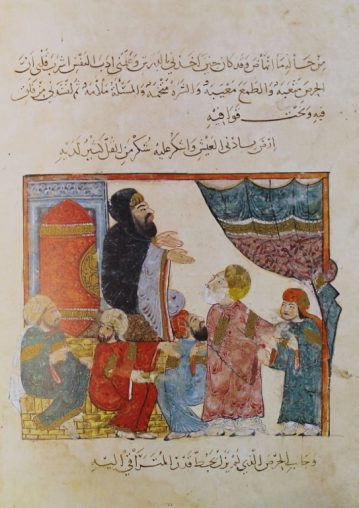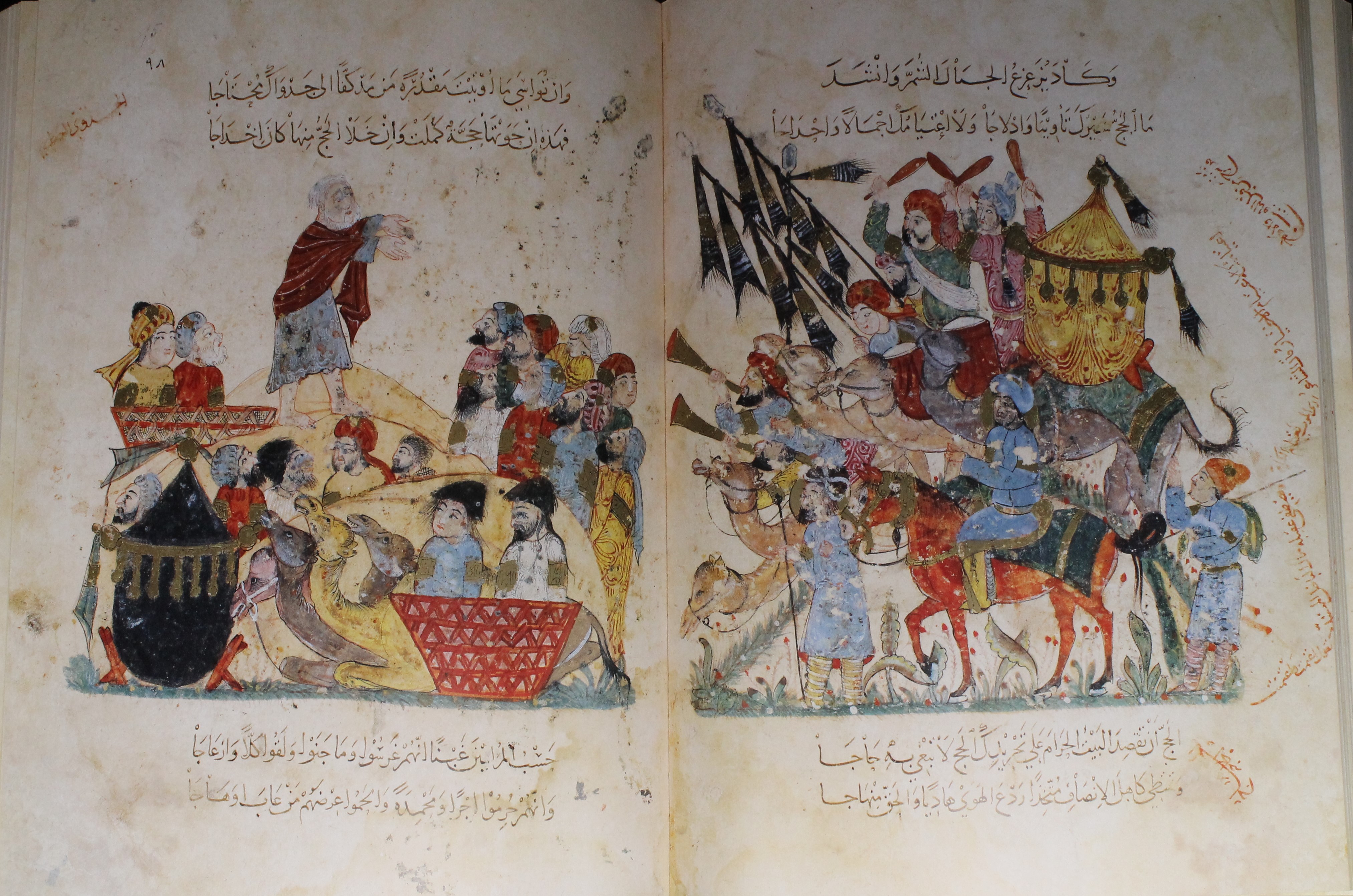Maqamat Al-Hariri Illustrated by Y. Al-Wasiti from a 13th Century Arabic Manuscript. TWO VOLUMES.
Al-Hariri, Abu Muhammad al-Qasim.
Synopsis
NUMBERED AND LIMITED edition to 2000 copies only. A MONUMENTAL WORK, and a landmark in Arabic painting and miniatures. It combines the primary excellence of being a grand collection of literature admired during a long and important period of Arab history, and fascinating collection of miniatures. “Among the treasures of the rich collection of manuscripts at the Bibliothèque Nationale in Paris is a codex of 168 folios (arabe 5847) with 101 illustrations containing the complete text of what is called al-Maqamat al-Haririyah in a decorated cartouche awkwardly located on the upper part of the first folio. The manuscript is sometimes known as the Schefer Maqamat, because it was given to the Bibliothèque Nationale by the Orientalist scholar Charles Schefer, who probably acquired it somewhere in the Ottoman Empire, where he had spent many years.
Dozens of manuscripts of Hariri’s Maqamat have been preserved from his own time. Of all the manuscripts with pictures containing Al-Hariri’s great work, (this copy) towers above all others for the quality and variety of its illustrations. It was completed in C. E. 1237 (A. H. 634, in the month of Ramadan) and according to its colophon, was copied and illustrated by the same individual, Yahya ibn Mahmud ibn Yahya ibn Abi al-Hasan ibn Kuwwarih al- Wasiti, presumably originating from the city of al-Wasit.
This essay was written at a time of great sadness for me, as presumably civilized human organizations failed to find ways to resolve differences and felt compelled to kill each other instead. By the time this book comes out, the worst of the war will be over, but the emotional depression of men and women of good will is likely to remain for a while. This book which deals, if not with Baghdad itself, certainly with Iraq, can be construed as a homage to the permanent values of mankind and to the power and fascination of art, regardless of when or where it was made”. (Oleg Grabar, Introduction).








